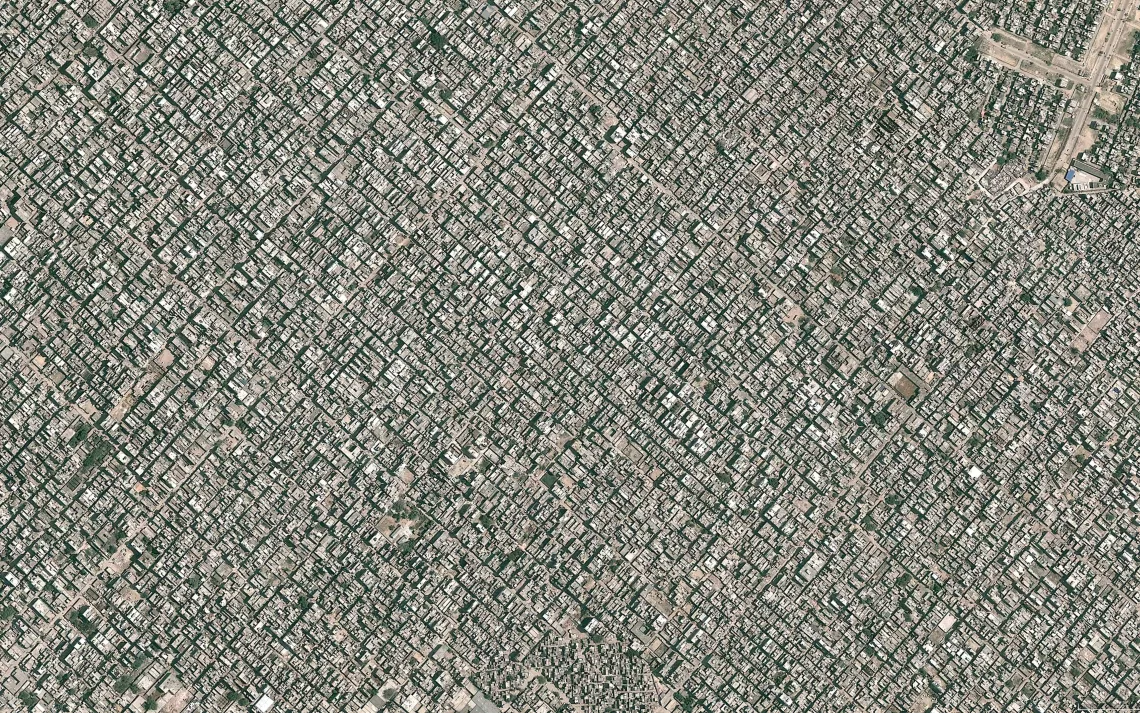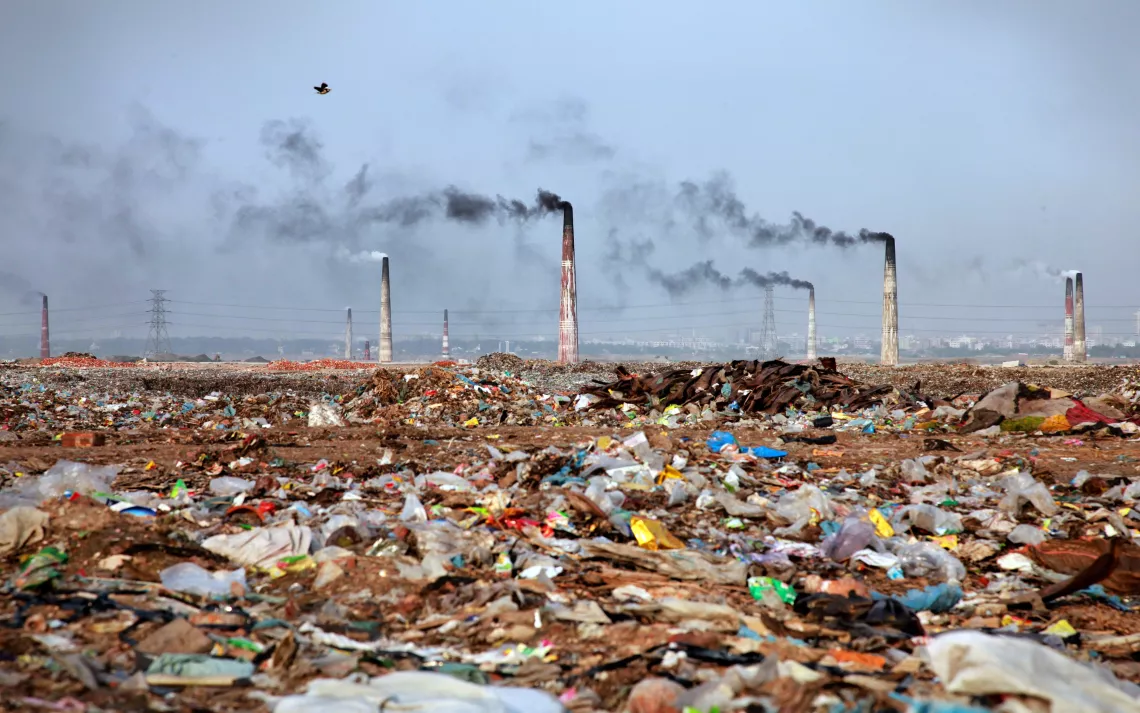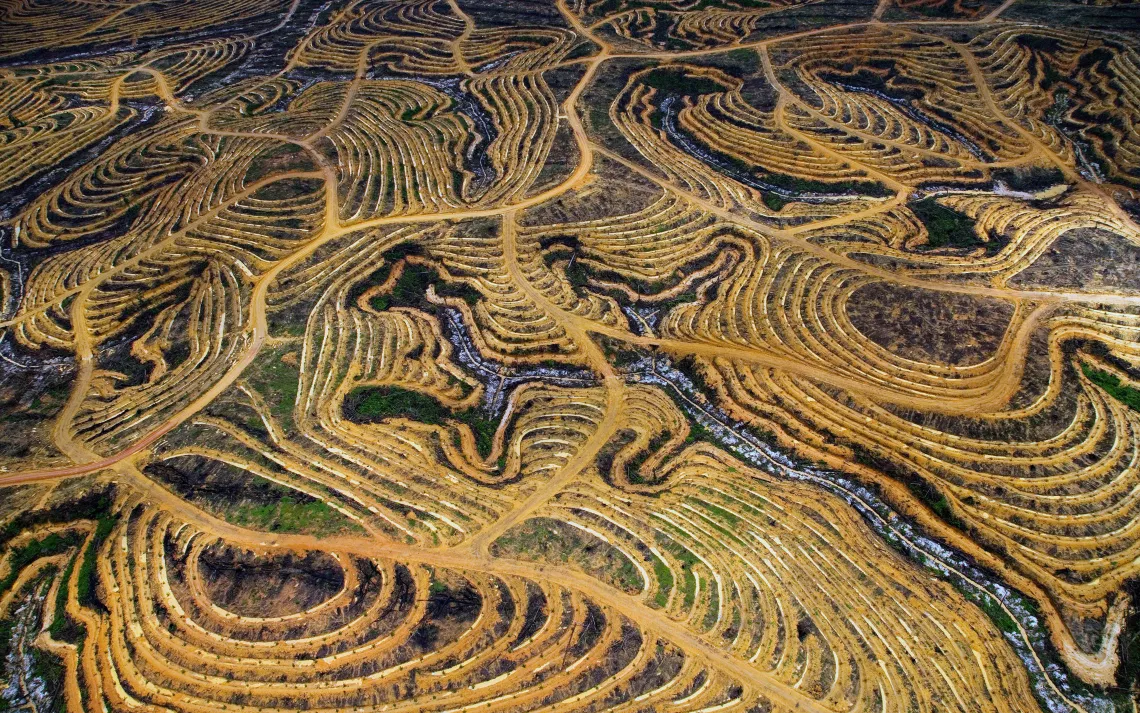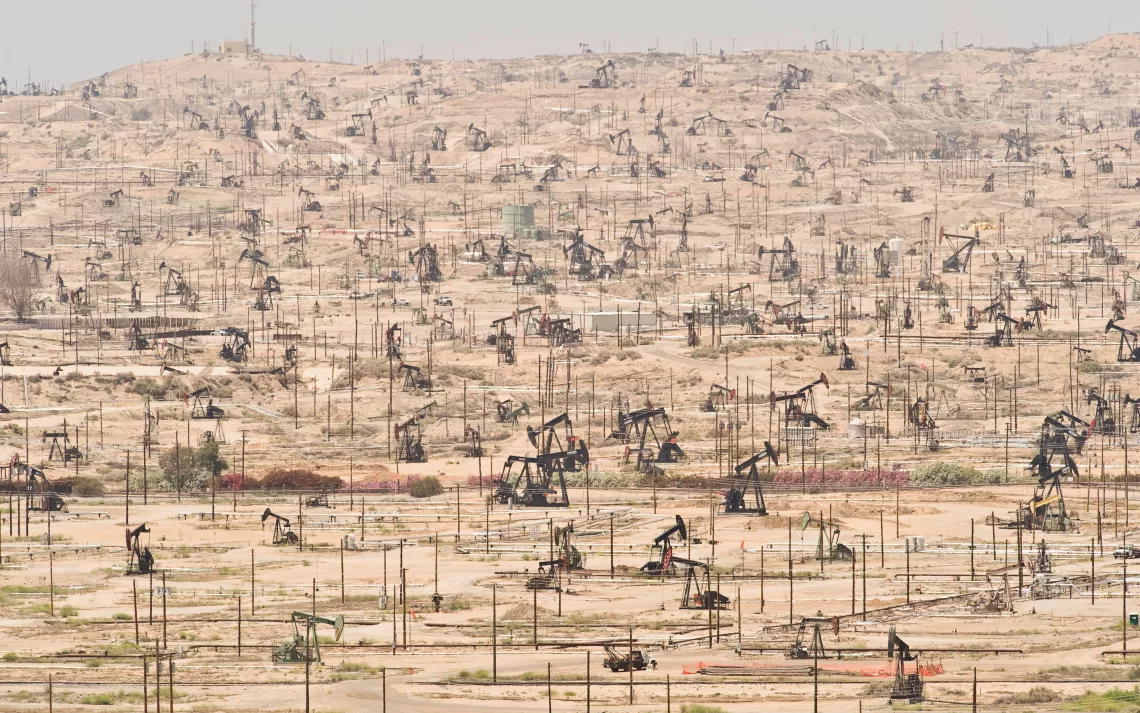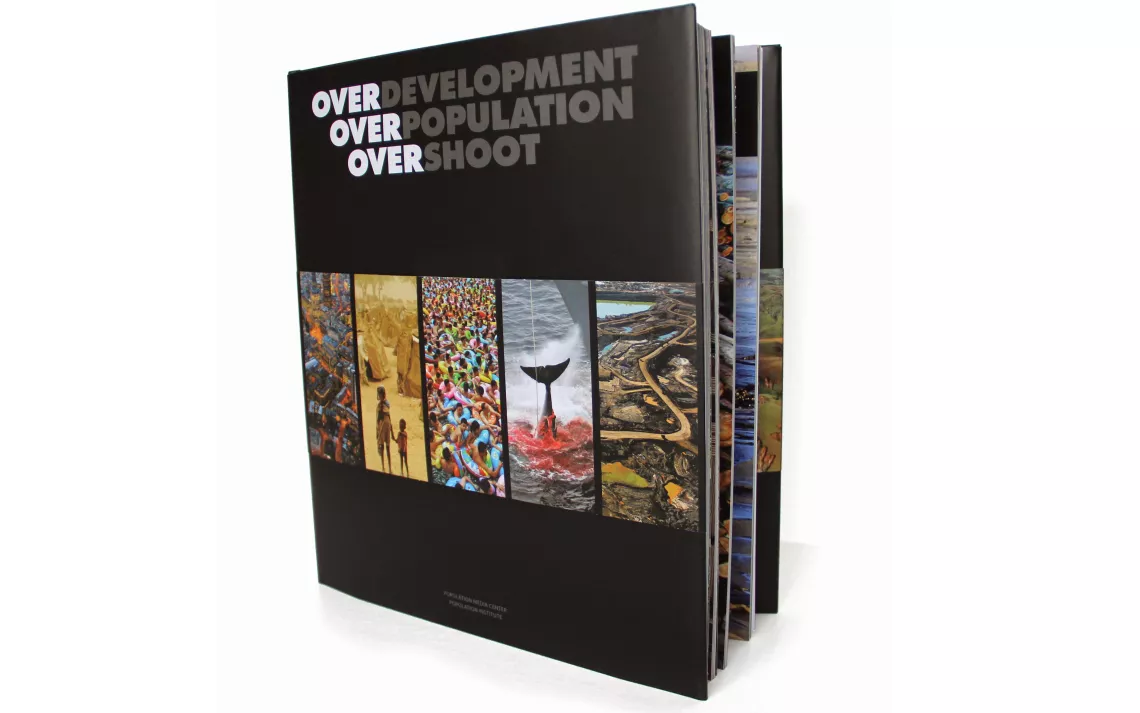Visualizing Excess
Click through the slideshow to get a glimpse of Overdevelopment, Overpopulation, Overshoot.
It took humanity 50,000 years to reach a population of 1 billion, but hardly more than a hundred years to add the next billion. The increase from 6 to 7 billion took just 15 years.
Put that trend on a graph and you’ll see a hockey stick; look out the window flying into LAX or LaGuardia at the concrete and stucco sprawl, and you’ll feel the same alarming trend much more viscerally.
But an even better way to grasp the magnitude of our exploding impact on the planet is to look through the big, beautiful book Overdevelopment, Overpopulation, Overshoot, or OVER, put together by the Population Media Center and the Population Institute as part of the Global Population Speak Out campaign.
The goal of the campaign, which kicked off last February and continues throughout the year, is to fuel the conversation about how to solve global overpopulation, an issue causally linked to climate change, extinction of species, and the depletion of natural resources.
OVER serves as the face of the campaign and a digital edition is available for free online. For the full impact, though, be sure to pick up a physical copy (buy it retail for $50, or if you want to help spread the message, request a free copy).
The slides here provide just a taste of the evocative images and words found in the book, which lays out the compelling case that humanity is at a crossroads. Will we continue to worship at the altar of consumerism and growth, and reap the consequences of fouled land and water, poverty and waste, or will we choose to live sustainably within the natural system of which we are all part?
 The Magazine of The Sierra Club
The Magazine of The Sierra Club

